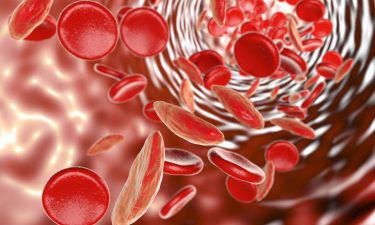

Kaoui and his colleagues' research takes important first steps toward understanding the consequences of red blood cell shape and behavior on overall blood flow. The ailment, which develops when plaque obstructs blood flow in an artery, is the leading cause of death in the United States. Some of the most common hemoglobin variants include hemoglobin S, the primary hemoglobin in people with sickle cell disease that causes the red blood cell to become misshapen (sickle), decreasing the cell’s survival hemoglobin C, which can cause a minor amount of hemolytic anemia and hemoglobin E, which may cause no symptoms or generally.

Normocytic anemia: This condition results from a lack of red blood cell production. This situation occurs with iron-deficiency anemia, in which red blood cells have less.

More generally, understanding circulation is important to pathology of illnesses like coronary heart disease. These abnormally shaped cells get stuck in blood vessels, blocking normal blood flow. Other patients have a normal RBC count but a low hemoglobin level. Little is known about how the shape of red blood cells could change how they transport oxygen or how they interact with chemicals in the body. They also found that this morphing helped the sacks catch up with the rest of the fluid, suggesting that the slipper shape achieves more efficient blood flow. They found that when the cells weren't sufficiently plump, the symmetric parachute collapsed into a slipper. To find out why, Badr Kaoui at the Université Joseph Fourier in Grenoble, France and his colleagues modeled the cells as two-dimensional fluid-filled sacks flowing in a liquid. When a red blood cell flows through an artery, one face usually balloons out like a parachute, but sometimes the cell can deform to resemble a slipper. Their research is reported in Physical Review Letters and highlighted with a Viewpoint in the October 26 issue of Physics. The insights could help understand the mechanisms involved in arterial disease and other blood flow-related ailments. A team of physicists have used simulations to explore how fluid flow might be responsible for this deformation, as well as how the deformation in turn affects blood flow. The body produces too many immature cells, called blasts. But they can sometimes deform into an asymmetrical slipper shape. Myelodysplastic syndrome (MDS) is a condition affecting the white blood cells in your bone marrow. Red blood cells, which make up 45 percent of blood, normally take the shape of circular cushions with a dimple on either side. Under some conditions, the cells tend to form asymmetric shapes. (Bottom right) The simulated shapes of the cells as a function of the surrounding flow velocity and their reduced area. (Bottom left) The velocity profile of the fluid that carries the cells through a blood vessel is assumed to have a symmetric parabolic shape. (Top) The shape of a red blood cell at rest is symmetric, with both sides of the membrane concave. The motion and shape of red blood cells depends on the flow environment.


 0 kommentar(er)
0 kommentar(er)
